Good evening, I didn’t think I would make a comment on this and would leave it for you to read and make a comment yourself.
Maybe we ought to take note of this.
If it doesn’t fit elsewhere it will fit in here!
Good evening, I didn’t think I would make a comment on this and would leave it for you to read and make a comment yourself.
Maybe we ought to take note of this.
Have you been given one? Mr Physics got three over a week ago in his Sainsbury’s change. I am still waiting for one, and lots of people around here are waiting too. Many still haven’t seen the new £1. I am sure there is a Scientific experiment to be carried out into the way the coin is being distributed. I suspect many in the big cities have already forgotten what the old £1 coin looks like, but here they just haven’t reached us. Is this the banks? Are we not spending enough? I’d assumed that each bank would be given new coins and rapidly the old ones would be taken out of circulation. Have they been passed around in Carlisle? They’re certainly in Kirkintilloch now, and the Co-op in town has had a few, but they’ve been supplied by visitors.
Well, I am not going to go searching for one, and I have seen them, but I will be keeping note of when my first new £1 coin is handed over to me, I hope I don’t miss it! Shall I keep it or spend it?
P.S. when buying my last creme egg from Benmar Garage and trying to claim my car wash vouchers I finally got my first new £1 coin. Now I need to decide what to do with it. Then my 82 year old babysitter gave me coin number 2. They are now in circulation, although I think it’s mainly the tourists that have brought them in. Do tell me when you get one.
The Royal Mint Website gives the following details:
The current £1 coin is being replaced for the first time in over thirty years because of its vulnerability to sophisticated counterfeiters.
My comment to this is how do we know which ones are counterfeit? I think most of the £1 coins that we get are counterfeit. Why do they change them so much?
Approximately one in thirty £1 coins in circulation is a counterfeit.
That is why the Royal Mint are introducing a new, highly secure coin on 28 March 2017 to reduce the costs of counterfeits to businesses and the taxpayer.
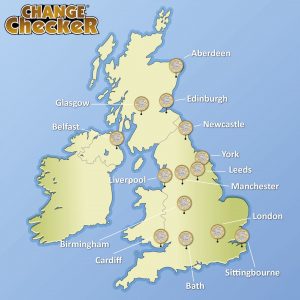
I wonder if the money has got as far as Cornwall and Orkney yet too- you can see from the map above why it is taken some time to fill the massive gap between coins delivered to Liverpool and Glasgow. What is the reason that Sittingbourne got a delivery of the new coins?
The new coin has a number of features that make it much more difficult to counterfeit.
12-sided – its distinctive shape makes it instantly recognisable, even by touch.
Bimetallic – it is made of two metals. The outer ring is gold coloured (nickel-brass) and the inner ring is silver coloured (nickel-plated alloy).
Latent image – it has an image like a hologram that changes from a ‘£’ symbol to the number ‘1’ when the coin is seen from different angles.
Micro-lettering – it has very small lettering on the lower inside rim on both sides of the coin. One pound on the obverse “heads” side and the year of production on the reverse “tails” side, for example 2016 or 2017.
Milled edges – it has grooves on alternate sides.
Hidden high security feature – a high security feature is built into the coin to protect it from counterfeiting in the future.
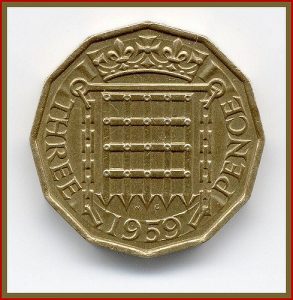
![]()
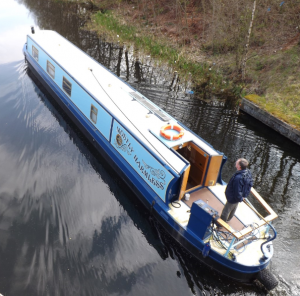
…..and finally the weather was good, the boat was respectable so it was off to the cut. It has been a long time since Mostly Harmless got to blast her engines out on the canal.
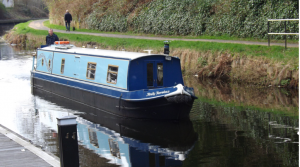
Mr Physics was in charge of getting us out of the marina and a turn to port to travel to the stables, one of the horse changing places when there was a rush to get passengers from Edinburgh to Glasgow in just under seven hours.
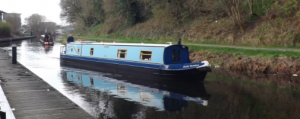
When you get on the cut it is like the canal water gently washes away all the worries and concerns, and all you can focus on is the comforting quiet hum of a deep engine ticking over without strain and the birds calling a warning in the trees. Suddenly, because you are on a boat, people stop along the towpath and want to wave at you. Funnily, you want to wave back! Now would you wave at someone as they walked passed on the towpath? No neither would I: so why the urgent desire to wave and be recognised when slowly cruising on a boat at walking pace? It is lovely to make people smile. There isn’t enough traffic on the canal so that a boat is still a rarity, although the number of hire boats has increased thanks to the Kelpies and the Falkirk Wheel. Talking of increased traffic, as Mrs Physics was dropped off on the pontoon to take some photos of Mostly Harmless to show she really was moving a Black Prince hire boat came under Townhead Bridge. Capturing the two boats passing on this stretch of the canal is unusual.
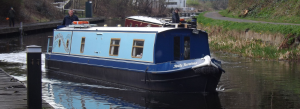
Mrs Physics, carefully guided by Mr Physics brought the boat back home to the marina, just as the wind was picking up. You can’t begin to imagine how hard it is manoeuvring 17 tonnes of 2.1 m wide, 17m long steel when the wind hits you side on. Vector addition really is seen here. Mrs Physics even got compliments about how she carefully reversed on to the pontoon and switched off the engine without crash, bang or screams. Mr Physics will never know what that encouragement meant. So maybe after several years I am getting the knack of this steering. I wish I could do a helmsman course to prove it.

I hope all you students doing exams are working hard, but also getting time to relax. It is vital to recharge your batteries (literally in the case of Mostly Harmless), switch in to the world around you and put life in context.
Well chilled! Now I can start catching up with all the work that needs doing!
![]()
Mrs Physics has collated some inspiration quotes for young people. I hope that you find something here to grasp on to when things are going bad or well, and to remember that life can get better. Just know when to ask for help and when to share your success. People have an in-built desire to be needed, so ask if you feel you can’t deal with it; someone is there to help you through.
I was born to achieve
I create my own destiny
Champions are people like me.
I will love and respect myself every day of my life.
It’s not what happens in life, it’s my reaction to what happens.
My positive thoughts lead to positive actions.
All the resources I will ever need are within me.
Problems are opportunities that make me stronger.
Treating people with respect will assure my future.
Leaders are learners.
To laugh -is to risk appearing the fool
To weep -is to risk being called sentimental
To reach out to another -is to risk involvement
To expose feelings -is to risk showing your true self
To place your ideas and your dreams before the crowd -is to risk being called naive
To love -is to risk not being loved in return
To live -is to risk dying
To hope -is to risk despair
To try -is to risk failure
But risks must be taken, because the greatest risk in life is to risk nothing
The person who risks nothing, does nothing, has nothing, is nothing, and becomes nothing
He may avoid suffering and sorrow, but he simply cannot learn, feel, change, grow or love
Chained by his certitude, he is a slave; he has forfeited his freedom
Only the person who risks is truly free.
Dr Leo Buscaglia
You have a strong character and will never give in to peer pressure.
You know you are unique. You know that no-one else is exactly like you.
You are totally focussed on your goals and objectives.
You know exactly where you are going in the world.
You have the ability to get back on your feet when life throws you down.
You have respect for every human being irrespective of colour, creed, country or religion.
You know that Knowledge is important to you future and the future of you kids.
You know the difference between right and wrong.
You respect and you give more than you take.
You know your life will be a mirror reflection of how you treat others.
You know that personal sacrifices now will pay for dividends later.
You know that gangs are for followers and not for leaders.
You know that drugs and excessive alcohol could ruin your life.
You know deep down that you have talents, skills and abilities.
You are always a good friend striving to offer unconditional love.
You will be a great parent to your kids.
You know that success is down to determination, hard work and a positive mental attitude.
You know that when you are old you can look back and know your life was worthwhile.
Watch your thoughts they become your words.
Watch your words they become your actions.
Watch your actions they become your habits.
Watch your habits they become your character.
Watch your character it becomes your destiny.
We make a living by what we get. We make a life by what we give.
SUCCESS To laugh often and much; to win the respect of intelligent people and the affection of children; to earn the appreciation of honest critics and endure the betrayal of false friends; to appreciate beauty, to find the best in others; to leave the world a little better; whether by a healthy child, a garden patch or a redeemed social condition; to know even one life has breathed easier because you have lived. This is the meaning of success.
Ralph Waldo Emerson
As we approach exam time, be inspired by these words. Do your best, you should never be embarrassed about doing your best, whatever the result.
![]()
Well I made it to the end of term, but it was crawling to the end post. Although I must share the comments made by one of the staff, who is getting married during the holidays. I was signing out for two weeks and one day without having to go in to school, (although I am not sure I’ve ever managed to stay away for all of the holidays) when I had a cracking conversation over the signing out sheet. It went something like this
Mrs Physics, “So when is the big day?”
Groom-to-Be, “Tonight”
“Tonight? Surely not”
“Don’t you mean the lottery? Tonight I find out if I’ve won the millions.”
“Well will you still get married if you win the lottery?”
“That’s what the lady asked,” she said “Will you still love me if you win millions?”
To which the Groom-to-Be answered, “Yes, but I’ll miss you!”
That’s just what I needed to start the holidays, but I am still not in a making sense mode.
Its time to chill out, get some exercise and catch up. I hope Groom-To-Be has a great wedding and comes back after the holidays. Personally I’d rather you not win the lottery as you cheer me up on the cold dark mornings, but if you do spend it well!
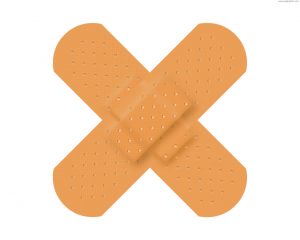 …. I am not sure what to make of this.
…. I am not sure what to make of this.
Mr Physics has spent the night with Mostly Harmless leaving Mrs Physics to be in charge of tea. This is never a good move, even though tea is just a shop bought pizza. She had hoped, after giving instructions to Piglet- the runt of the litter, that the oven would be on and a large mug of tea ready on return from a visit to Gran in her care home.
Alas, the oven was cold and the kettle empty. So off Mrs Physics set to get dinner ready. All went well until the bleeper went off to say the pizza was ready. After a quick look, the two pizzas did indeed look fully cooked. Unfortunately, for some strange reason, Mrs Physics placed the oven gloves on her right hand and opened the door, which wasn’t hot. She then reached into the oven with her left hand and extracted the metal baking sheet. Such was the shock that instead of letting go straight away she looked at her oven gloved hand and wondered why she had done such a stupid thing.
Fingers plunged in cold water haven’t stopped the blisters forming and writing is currently impossible. No idea how the AH UASPs will get marked tomorrow. Let’s hope for healing.
Now why is this a blog post? I just wonder what it is that causes people to do such stupid things? Is it purely tiredness? More to do with state-of-mind? Anger? Has anyone researched into this?
Well maybe one of my current students will research this topic and let me know. I can wait but don’t be too long, I don’t know if I will get progressively worse at doing silly things.
![]()
I’ve just spent the day at the SQA. I left my house just after 7am and returned at 10:30pm. What a long day. I’ve spent it in the company of clever and exceptional people with a lovely range of skills. I’ve learned things too. For years I’ve tried keeping my units with the numbers on questions and always thought it was widows and orphans. Today I found out it was control+shift+space. See you are never too old to learn. Thanks for the laughs guys. It was a very long day and hard work but I feel refreshed from the laughter.
Mostly Harmless has new neighbours on the pontoons, a wide beam one side, called Dungraftin. The other side sat a beautiful kingfisher. See the photo below. It was just 5m away. We saw it catch a fish. It didn’t even appear to be looking in the right direction.
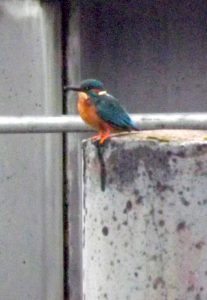
Back on Mostly Harmless for the 2016 Canal festival. It’s so wet, I’ve written the blog for the Royal Society that I promised them.
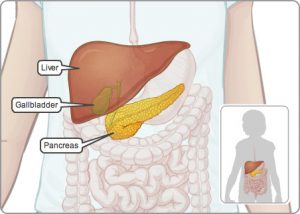
The gall bladder is a pear-shaped organ, between seven and fifteen centimetres long, that sits just under the liver and shares the common bile duct with the liver. The gall bladder stores the bile, a yellow-green fluid containing water, cholesterol, phospholipids and bile acids to aid digestion, as well as waste products for excretion via the bowel, such as bilirubin. Bile, which is produced by your liver, acts as a detergent, breaking up the fat from food in your gut into very small droplets, so that it can be absorbed. It also makes it possible for your body to take up the fat-soluble vitamins A, D, E and K from the food passing through your gut. The gallbladder is empty and flat after a meal, like a flat balloon: but before a meal it might be the size of a small pear and full of bile. In response to signals, the gallbladder squeezes stored bile into the duodenum (small intestine) through a series of ducts. In the duodenum, the bile breaks down fat.
Gallstones, lumps of solid material are formed in the gallbladder when the different elements, which make up your bile, become imbalanced. They usually look like gravel, but can be as small as sand or as large as pebbles, sometimes filling the gallbladder. They may take years to grow and there may be one or several.
Gallstones are formed from the chemicals in bile and may be:
Gallstones are more common in women than in men because cholesterol is a component of oestrogen, and the fluctuating levels of oestrogen need to be broken down to cholesterol and excreted in bile.
Gallstones can also form when the flow of bile is reduced. This may occur due to:
Many people live with gallstones without symptoms and are unaware they have them until the stones show up in tests performed for another reason.
The most common symptom of gallstones is pain in the abdomen, known as biliary colic. This is a pain that usually lasts between one and five hours (but sometimes up to eight) and varies from mild indigestion or discomfort, to severe pain. Sometimes the pain may be mistaken for a heart attack or a peptic ulcer; due to strong contractions as the gallbladder tries to expel a stone. The pain usually begins after eating fatty foods, though it can also wake you up during the night. These attacks are usually infrequent. Other symptoms may include nausea, vomiting or excessive sweating.
Symptoms indicating complications include:
If gallstones have been discovered incidentally and are not troublesome, they are usually monitored and left alone. Some people may have one mild attack of biliary colic and no further trouble, while others have continuing problems. Painkillers, may be prescribed to control the symptoms of an attack.
The gallbladder is usually removed by keyhole surgery in a process called laparoscopic cholecystectomy which is performed under a general anaesthetic, using a fibre-optic tube with a tiny camera and a light on the end, called a laparoscope. A small incision is made and the abdomen inflated with carbon dioxide gas. Inflating your abdomen gives the surgeon a better view of your organs and more room in which to work. Instruments are then inserted into the abdominal cavity through three small incisions and controlled very precisely by the doctor, who is able to view your organs via a TV screen. The gallbladder is removed through a small cut in your navel. Afterwards the patient will have four small scars.
Mrs Physics had this very problem and underwent the procedure mentioned. There was so much Physics to learn about during the whole process, e.g. the ultrasound scan, X-rays, CT scan, MRI scan, fibre optic laproscope, thermometers, stethoscopes, EGC devices and that is just the equipment.
However, before the gall bladder was removed a gallstone had to be extracted from the bile duct. Researching this, the duct was approximately 4 or 5 mm diameter (from which you astute ones can work out her age). However, the wonderful Mr Apollos, said that the stone in Mrs Physics’ duct was 28mm diameter, just over the size of a sixer marble. You can imagine how difficult that was to extract and all Mrs Physics can remember was waking up during the middle of this extraction to be told by all those around to keep still. A few complications arose, not least a puncture wound to the pancreas, which led to a two week stay in Ward 6; during which time Mrs Physics developed an admiration for the nursing staff, who not only were mentally but physically exhausted after their shift, an immense gratitude to Mr Apollos and Dr Greg and lots of new friends. She also felt that she was quite knowledgeable about all things gall bladdery; as it appeared most people on Ward 6 had the very same problem.
I dedicate this post to all those people who nursed me and the amazing friends I made whilst on the ward, but especially Karen and Jean.
This is the only picture of Mrs Physics that she has been pleased to show to others. It is pure brilliance, snapped my the surgeon on his camera. The second shot shows what will not be missed. Can you count the large numbers of stones and notice the different sizes. To quote Shrek
“Better out than in!”
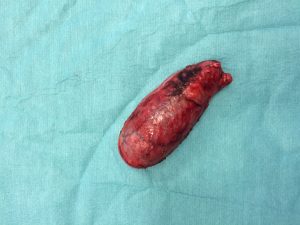
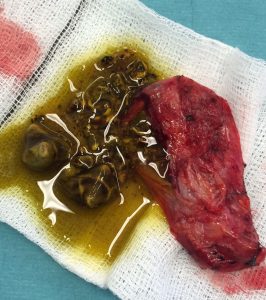
Teachers: If you are looking for copyfree pictures of the gall bladder- feel free to use as desired.
![]()
Mrs Physics is taking to the stage!
(Yes, I know the joke…. “You should be on the stage: there’s one that leaves in five minutes”).
It appears I am going on the stage appearing with two far more distinguished people than I. I think I am there to make the numbers up. The info about the event is given below.

Quality popular science books can be an interesting way to liven up lessons. Using the Royal Society Young People’s Book Prize shortlist as an example, author and teacher Gill Arbuthnott, teacher Mrs Physics from Lockerbie Academy and education researcher Ruth Jarman discuss how the segue from literature to science, or science to literature, can engage school age children on new and exciting levels.
Now, I wasn’t sure what I’d let myself in for when I signed up for this. I was quite terrified but put it to the back of my mind behind the gall bladder removal. (Which reminds me I must write a post about that soon.)
However, I’ve had to think about this event. So off Gill Arbuthnott came for a morning on Mostly Harmless and we had a really good chat. She’s a very interesting lady, with a love of Science and books and it was a privilege to share a coffee, few cakes and a salad (but not all together). It has totally got me thinking about Science books: no, not text books- books that students can read for pleasure, and there are plenty of them. I realised that apart from the Royal Society Young Peoples Book Prize and a few reviews in Science in Schools, we don’t actually get to know about Science books unless we spend hours in the bookshops, and that’s not easy in rural areas and it isn’t always clear where to find them. Well, that’s where the other person on the panel comes in. I hadn’t realised that, education researcher, Dr Ruth Jarman is aiming to increase the profile of Science reading and literacy for fun.
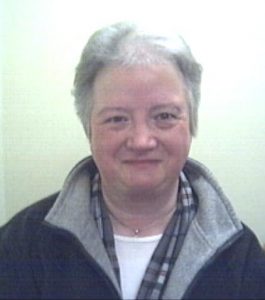
I am not sure about having the audience there, I think the three of us will have a wonderful chat and share some great ideas: I am quite looking forward to finding more about what they do. I think I had better go and prepare something and make sure that I keep fairly quiet, as these two ladies will be very interesting and have loads to say! I am a bit worried about the blurb for the Festival, as it talks about it being full of experts, so I don’t know why I was asked.
Students at Lockerbie Academy have been very fortunate to have participated in the Royal Society Young Peoples Book Prize for several years and it is really interesting. Many students don’t know that you can buy or borrow interesting Science books and read them for fun!
Do come and say hello if I see you, although I might have to rush off, it will be double higher first thing Tuesday morning!
![]()